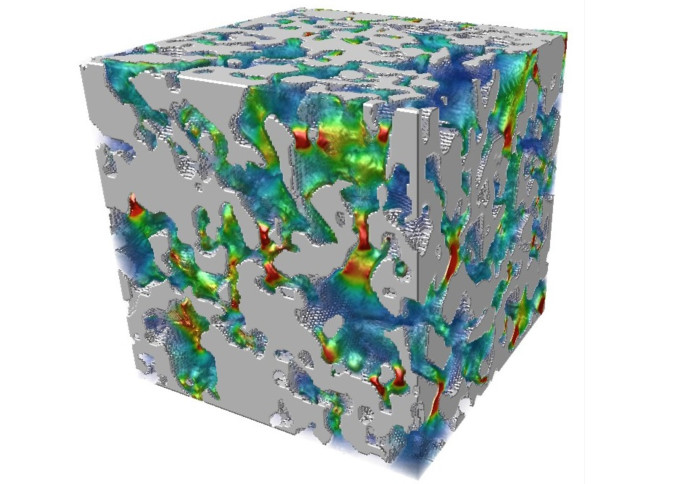

Pores for thought: Generative adversarial networks for stochastic reconstruction of 3D multi-phase electrode microstructures with periodic boundaries.
https://www.nature.com/articles/s41524-020-0340-7
Researchers from the Dyson School have developed a machine learning approach to design better battery materials, which was recently published in the Nature journal Computational Materials. Batteries contain porous, sponge-like layers called electrodes. The shape of the pores in these components effect their performance. If they’re too narrow and wiggly then charging will be slow; but if they’re too large or in the wrong place then the battery won’t hold much energy. The methods developed in this work allow realistic microstructures to be generated in the computer that can then be tested using simulations before attempting manufacture. The machine learning method (called Deep Convolutional Generative Adversarial Networks or DC-GANs) is commonly used for generating and manipulating colour photos. The figure shows the structure of the algorithm and highlights the fact that GANs work by making two neural network battle each other!
Article text (excluding photos or graphics) © Imperial College London.
Photos and graphics subject to third party copyright used with permission or © Imperial College London.
Reporter
Sophie Sykes
Institute of Global Health Innovation



